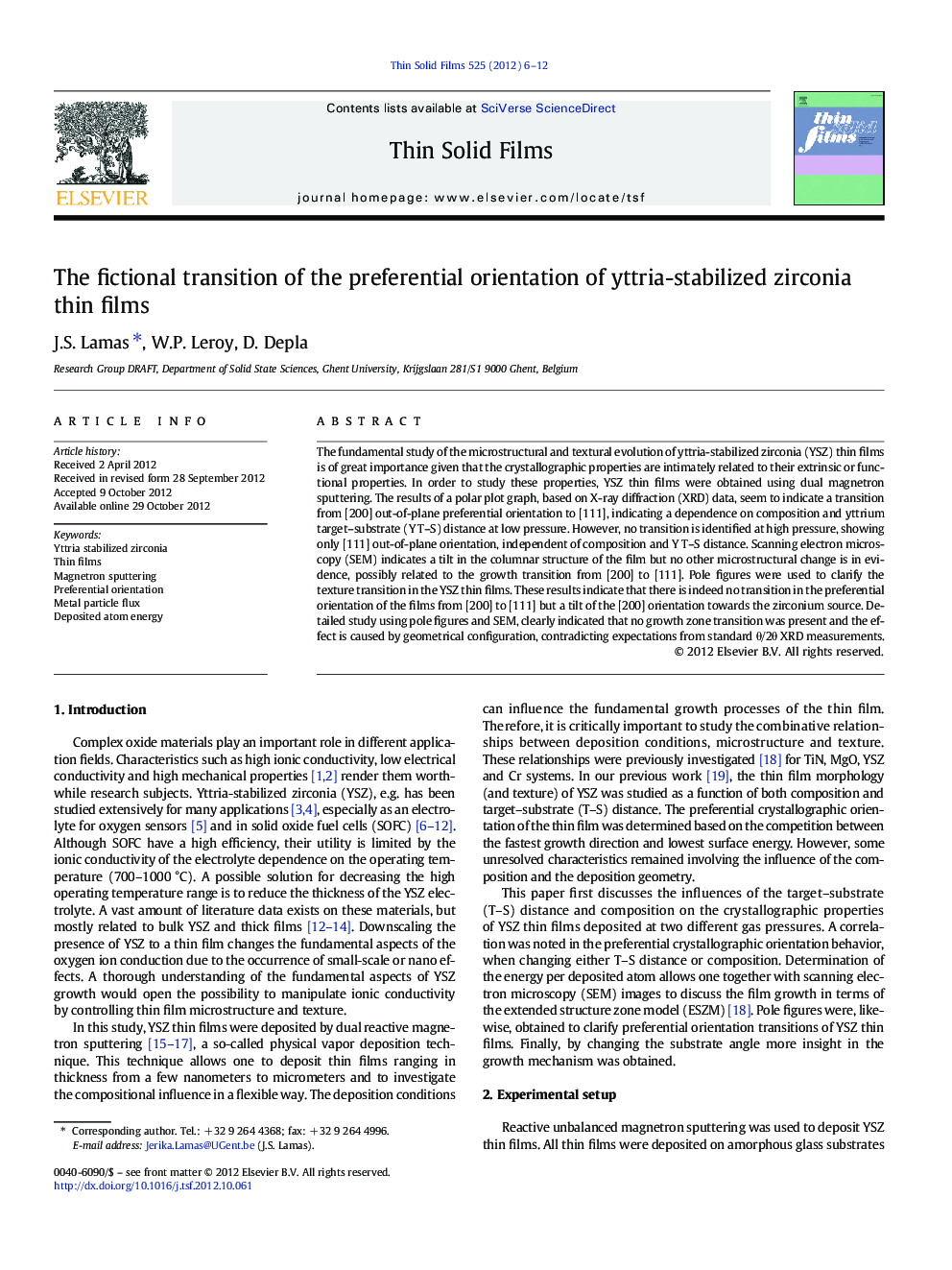| Article ID | Journal | Published Year | Pages | File Type |
|---|---|---|---|---|
| 1666485 | Thin Solid Films | 2012 | 7 Pages |
The fundamental study of the microstructural and textural evolution of yttria-stabilized zirconia (YSZ) thin films is of great importance given that the crystallographic properties are intimately related to their extrinsic or functional properties. In order to study these properties, YSZ thin films were obtained using dual magnetron sputtering. The results of a polar plot graph, based on X-ray diffraction (XRD) data, seem to indicate a transition from [200] out-of-plane preferential orientation to [111], indicating a dependence on composition and yttrium target–substrate (Y T–S) distance at low pressure. However, no transition is identified at high pressure, showing only [111] out-of-plane orientation, independent of composition and Y T–S distance. Scanning electron microscopy (SEM) indicates a tilt in the columnar structure of the film but no other microstructural change is in evidence, possibly related to the growth transition from [200] to [111]. Pole figures were used to clarify the texture transition in the YSZ thin films. These results indicate that there is indeed no transition in the preferential orientation of the films from [200] to [111] but a tilt of the [200] orientation towards the zirconium source. Detailed study using pole figures and SEM, clearly indicated that no growth zone transition was present and the effect is caused by geometrical configuration, contradicting expectations from standard θ/2θ XRD measurements.
► Study of the preferential orientation of Yttria-stabilized zirconia thin films ► Comparison of the preferential orientation at two different chamber pressures ► Correlation with the energy per adparticle and the extended structure zone model ► Use of pole figures analyses to clarify the change in the preferential orientation
